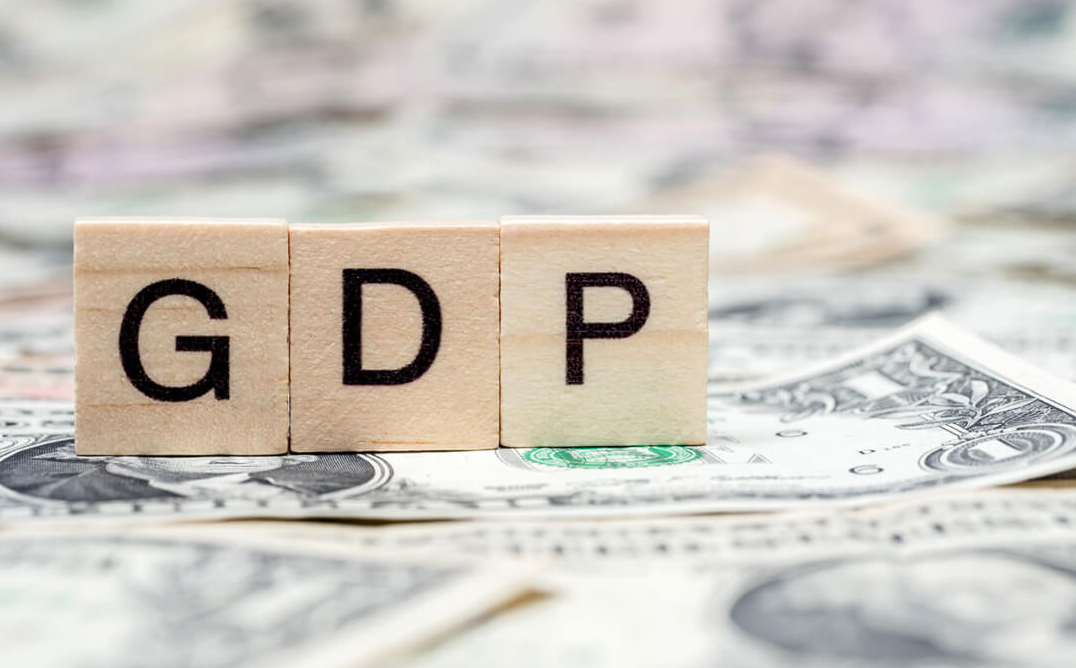
GDP full form is a gross domestic product. It includes the total market value of all products, goods, and services produced in a country during a given time. GDP measures the size of the economy and the overall growth or decline of a country’s economy. It shows a country’s economic health and determines the standard of living of the people in a country, viz. When GDP increases, people’s standard of living in a given country increases.
Types of GDP
Here are some of the types of GDP for users:
Nominal GDP
Currently, this is the total monetary value of all goods and services produced at current market prices. It includes all price changes in the current year caused by inflation or deflation. GDP full form in English is Gross Domestic Product.
Real GDP
The total value of all goods and services produced at constant prices. The prices used to calculate GDP are on a specific base year or the previous year. Now that it is an inflation-adjusted measure, it removes the effects of inflation and provides a more accurate representation of economic growth. Moreover, GDP full form in India is Gross Domestic Product.
Actual GDP
The real-time measurement of all products at any interval or time. In addition, it shows the current economic business situation.
Potential GDP
The ideal economic conditions with 100 percent employment in all sectors and stable growth.
Methods to Calculate GDP
Below are the different approaches to calculating GDP:
- Production approach
- Income approach
- Expenditure approach
It is a method used to measure the size of the economy and the overall growth or decline of a country’s economy. In particular, it indicates the economic health of a country, as well as the standard of living of people in a particular country, i.e. because GDP is a method of increasing people’s living standards in this country. A country with a good GDP is considered an excellent country to live in. In India, we have three main sectors that contribute to GDP; Industry, service, and agriculture, including related services. GDP is the leading indicator to determine a country’s economic growth. Moreover, there are many approaches to calculating GDP.
If we talk about a simple approach, it is equal to the share of total private consumption, gross investment, and government spending plus the value of exports minus imports, i.e. the formula for calculating GDP = private consumption + gross investment + government spending + (exports – imports). Many ask the question, what is the full form of GDP? Well, GDP ka full form is Gross Domestic Product. In addition, GDP full form in economics is Gross Domestic Product.
Methods to Measure GDP
GDP can be measured using three methods, namely:
Output Method
Also known as the Value Added Approach, this method determines how much value is added at each production stage. It measures the monetary or market value of all goods and services produced within the boundaries of a country.
The output method is used to:
- Determination of gross domestic product (GDP) from various economic activities.
- Calculate intermediate consumption, i.e. the cost of materials, supplies, and services used in the final production of goods or services.
- To calculate gross value added, subtract intermediate consumption from gross value added.
Gross value added = the difference between the gross value of production and the value of intermediate consumption.
Output = total value of sales of goods and services plus the value of inventory changes.
The term “GDP at factor cost” refers to the sum of gross value added across all sectors of the economy.
To avoid the measurement of GDP being skewed due to changes in the price level, the calculation of GDP is at constant actual GDP prices.
GDP (by output method) = Real GDP (GDP at constant prices) – Taxes + Subsidies.
- By multiplying the production of each sector by its market price and combining the results
- By collecting gross sales and inventory data from company records and aggregating them.
Expenditure Method
It measures the total expenditure of all businesses on goods and services within the internal boundaries of a country. GDP (by expenditure method) = C + I + G + (X-IM)
C: consumption spending, I: investment spending, G: government spending, and (X-IM): exports minus imports, e.g. net exports.
Consumption in the above formula refers to consumer spending or personal consumption spending. Consumers spend money on monopolized goods and services such as groceries and spa treatments. Consumer spending is the most important contributor to GDP, accounting for over two-thirds of India’s GDP. As a result, consumer confidence has a significant impact on economic growth.
A high confidence level on the scale indicates that consumers are willing to spend money on goods and services. In contrast, a low confidence level reflects skepticism about the future and a reluctance to spend. Government expenditure stated in the formula represents government consumption expenditure and gross investment made on behalf of the government.
Governments must spend money on equipment, infrastructure, and salaries. When consumer and business investments decline, government spending can become even more important to a country’s GDP. Capital expenditures or domestic private investment are examples of investment. Businesses need to spend money to invest in their operations to grow.
Business investment is significant to a country’s GDP because it increases the economy’s productive capacity while creating more job opportunities. Net exports are calculated by dividing total exports by total imports (NX = exports – imports). However, net exports are the goods and services produced by an economy and exported to other countries minus the number of imports purchased by an economy’s domestic consumers. This calculation considers all costs incurred by companies based in a particular country, regardless of whether they are foreign companies.
Income Method
It measures the total income earned by the factors of production, i.e. labor and capital, within the internal boundaries of a country. The GDP income approach methodology starts with income from producing goods and services. Using the income approach method, we calculate income from all sources of production in the economy. The inputs used to produce a finished product or service are called factors of production. Therefore, land, labor, capital, and management are production components for companies operating within the boundaries of a country. GDP stands for “Gross Domestic Product” and is the total monetary value of all final goods and services produced (and marketed) in a given country over a particular time (usually 1 year).
Full Form of GDP in Hindi
GDP full form in Hindi is GDP (जीडीपी) का फुल फॉर्म या मतलब Gross Domestic Product (ग्रॉस डॉमेस्टिक प्रोडक्ट), या सकल घरेलू उत्पाद होता है


